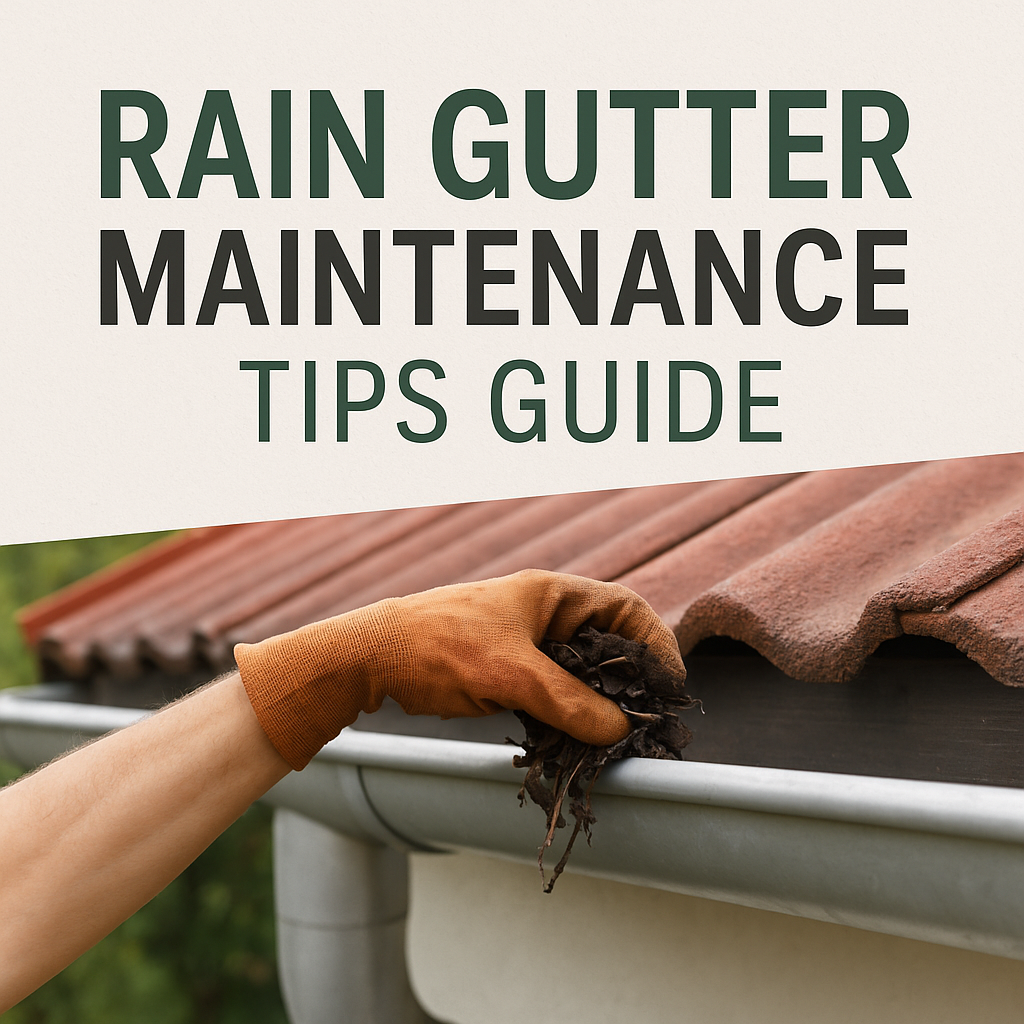
Your rain gutters play a bigger role in protecting your home than you might realize. By safely directing rainwater away from your roof, walls, and foundation, gutters prevent costly problems like leaks, wood rot, and basement flooding. But like any part of your home, they need regular care to keep working properly.
Here’s a complete guide to rain gutter maintenance that will help you extend their lifespan and avoid expensive repairs.
Why Gutter Maintenance Matters
Clogged or damaged gutters don’t just look bad—they can create serious issues for your home:
- Foundation damage – Overflowing gutters can pool water around your foundation, causing cracks and shifting.
- Roof and siding damage – Backed-up water can seep under shingles and behind siding.
- Basement leaks – Poor drainage often leads to water seeping into basements.
- Pest problems – Stagnant water attracts mosquitoes, birds, and even rodents.
A little routine maintenance can prevent all of this.
Essential Rain Gutter Maintenance Tips
1. Clean Gutters Twice a Year
The general rule is to clean gutters at least once in the spring and once in the fall. Homes surrounded by pine trees or heavy foliage may need more frequent cleanings. Use a sturdy ladder, gloves, and a scoop to remove leaves, dirt, and debris.
2. Flush With a Garden Hose
After clearing debris, run water through the gutters with a garden hose. This helps wash away fine particles and ensures downspouts are flowing freely. If water backs up, you may have a clog that needs extra attention.
3. Check for Leaks and Sagging
Look for cracks, rust spots, or sections pulling away from the roofline. Small leaks can often be sealed with gutter caulk, but sagging usually means the hangers need tightening or replacing.
4. Inspect Downspouts
Make sure downspouts extend at least 3–5 feet away from your home’s foundation. Extensions or splash blocks can help redirect water safely into your yard.
5. Trim Overhanging Trees
Overhanging branches drop leaves, twigs, and sap into gutters. Keeping trees trimmed back not only reduces clogs but also protects your roof from damage.
6. Consider Gutter Guards
If you’re tired of frequent cleanings, gutter guards can reduce buildup by blocking larger debris. While they don’t eliminate maintenance completely, they can cut down on time and effort.
Safety Tips for DIY Gutter Maintenance
- Always use a sturdy, well-positioned ladder.
- Have someone spot you if possible.
- Wear gloves to protect your hands from sharp edges and debris.
- Avoid cleaning gutters in bad weather or when the roof is wet.
When to Call the Professionals
Some jobs are best left to the pros. If your home is more than one story, your gutters are badly damaged, or you simply don’t feel comfortable working at heights, hiring a gutter professional is the safest option.
Final Thoughts
Your gutters are your home’s first line of defense against water damage. With regular cleaning, inspections, and minor repairs, you can keep them working properly year-round. A small investment of time now can save you thousands in repair costs later.
👉 Pro Tip: If you’re considering upgrading your gutter system, adding guards, or just want the peace of mind of professional care, schedule a free inspection with a trusted local gutter specialist.
